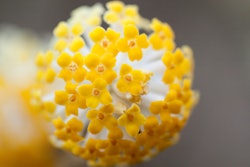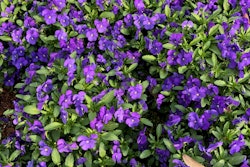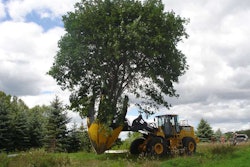By definition, annuals are plants that grow, flower, and die in a single season. You can use them in landscape designs by themselves or as a colorful complement to perennial beds.
Keeping it cool
Annuals grouped into the cool-season plant category usually tolerate frost but don’t do well in the summer heat. Your climate will dictate optimal planting times. If you live in a warmer climate with mild winters, you can plant these in late summer or fall and they should last all winter and into the spring. In cooler climates, plant these annuals in spring and they will last into the summer, until temperatures spike. In especially cool climates, cool-season annuals can last through the summer.
Popular choices include petunia, pansy, larkspur, snapdragon, cornflower and chrysanthemum.
Heating it up
Summer annuals will not tolerate frost. So regardless of the region in which you live don’t plant these until the threat of frost is over for the season. These plants will endure for as long as the weather is warm.
Choose from, among others, vinca, black-eyed Susan, zinnia, marigold, dusty miller, petunia, impatiens, snapdragon, Morning glory, geranium and verbena.
Made in the shade
If you want to add some color to your landscape but you’re working in shade, you still have lots of options. Some annuals that work well in shade include: impatiens, coleus, begonia, lobelia and wishbone flower (summer annuals); and primrose and pansy (cool-season annuals).
Bright ideas
Probably the largest segment of annuals is sun-loving annuals. If you have a sunny area, you have an almost endless list of annual plants from which to choose. Some popular choices are hollyhock, moss rose, zinnia, geranium, dusty miller, red salvia, verbena, marigold, dahlia and petunia (summer annuals); and sweet pea, chrysanthemum and kale (cool-season annuals).
Making your bed
If you’re creating a new bed, first determine the existing soil type. If the soil is poor, you may want to bring in topsoil and amend it with compost. If your foundation is a clay soil, you’ll want to add organic matter to help with drainage. Either way, you should till soil to a depth of at least 12 inches, working in the organic matter and adding fertilizer as you go. Choose a fertilizer with lots of potassium and phosphorus, such as 8-10-8 or 5-10-15.
If you’re working with an existing bed, assess its condition. If you turn the bed over a few times a year, you can get away with adding compost to the first few inches of soil and fertilizer to give plants an initial boost.
Take care
In addition to regular irrigation, your annuals will require an application of fertilizer every few weeks after transplanting. How often you fertilize will depend on which fertilizer you choose. If you prefer a liquid fertilizer, you’ll make applications every two to three weeks. Granular formulations last longer, though, and can provide nutrients up to six weeks.
While some annuals are “self-cleaning,” you’ll probably have others that you should “deadhead,” which means that you should remove old flowers from the plant. Doing so will encourage new growth and keep beds looking cleaner.










